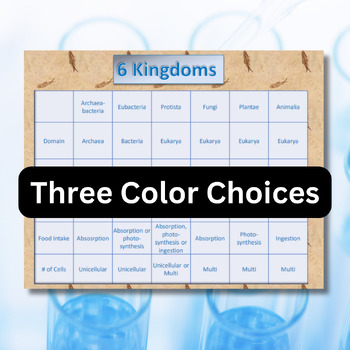

The inability to examine such organisms in detail made separation of these difficult at the time.Īs more scientific equipment became available it allowed scientists to examine organisms in more detail and note important features, such as the identification of sex organs. Originally, Linnaeus couldn't distinguish between different types of organisms such as algae, lichens, fungi, mosses and ferns. Linnaeus' original ideas have been adapted, but continued to be accepted and as new species are identified they can be fitted into the current classification system. The grouping of families was added to allow the large number of new species to be included in this system. It is much smaller than the American robin, Turdus migratorius, which belongs to a different genus. For example, the European robin is Erithacus rubecula. The binomial system is important because it allows scientists to accurately identify individual species. For example, human beings belong to the genus Homo, and our species is sapiens - so the scientific name is Homo sapiens. Each name has two parts, the genus and the species.

The binomial system of naming species uses Latin words. K ids p refer c andy o ver f resh g reen s alad There are many ways to remember this order, for example using the mnemonic: Species is the final classification stage, and the genus Panthera can be divided into:Īs an example, the complete breakdown of the classification of lions : Genus, the Felidae family can be further sub-divided into four genus examples: The domains are Archaea Bacteria Eukarya The kingdoms are Archaebacteria (ancient bacteria) Eubacteria (true bacteria) Protista Fungi Plantae Animalia Archaea Domain This Archaea domain contains single-celled organisms. Here are a few examples of which carnivores can be divided into: Under this system, organisms are classified into three domains and six kingdoms. Order follows class and as an example, mammals can be further sub-divide into a variety of different groups such as: Arthropod, which have jointed legs and an exoskeletonĬlass is an additional sub-division, which for example, results in the Chordata phylum being divided into:.Phylum follows Kingdoms and has many different organisms, including three examples below: Living things can then be ranked according to: prokaryotes (bacteria, blue-green algae).protists (Amoeba, Chlorella and Plasmodium).The first division of living things in the classification system is to put them into one of five kingdoms. The classification of species allows the subdivision of living organisms into smaller and more specialised groups. This system was developed in the eighteenth century by Carl Linnaeus. Living organisms are classified into groups depending on their structure and characteristics. A group of students used this diagram to classify three organisms into different kingdoms. Classification of living organisms Linnaean system of classification


 0 kommentar(er)
0 kommentar(er)
